
Northanger Abbey is a coming-of-age novel and a satire of Gothic novels written by the English author Jane Austen. Northanger Abbey was completed in 1803, the first of Austen's novels completed in full, but was published posthumously in 1817 with Persuasion, although the title page is dated 1818. The story concerns Catherine Morland, the naïve young protagonist, and her journey to a better understanding of herself and of the world around her. How Catherine views the world has been distorted by her fondness for Gothic novels and an active imagination.
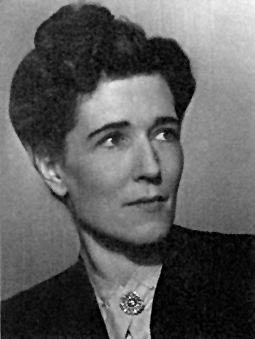
Georgette Heyer was an English novelist and short-story writer, in both the Regency romance and detective fiction genres. Her writing career began in 1921, when she turned a story conceived for her ailing younger brother into the novel The Black Moth. In 1925 Heyer married George Ronald Rougier, a mining engineer. The couple spent several years living in Tanganyika Territory and Macedonia before returning to England in 1929. After her novel These Old Shades became popular despite its release during the General Strike, Heyer determined that publicity was not necessary for good sales. For the rest of her life she refused to grant interviews, telling a friend: "My private life concerns no one but myself and my family."

These Old Shades (1926) is a historical romance written by British novelist Georgette Heyer. The novel is set around 1755: Heyer refers to the Duke of Avon's participation in the 1745 uprising as ten years previous; in addition the Prince of Condé is said to be about 20 years old. However, she also refers to Madame de Pompadour as actively involved with Louis XV, whereas her relationship with the King ended at about 1750.
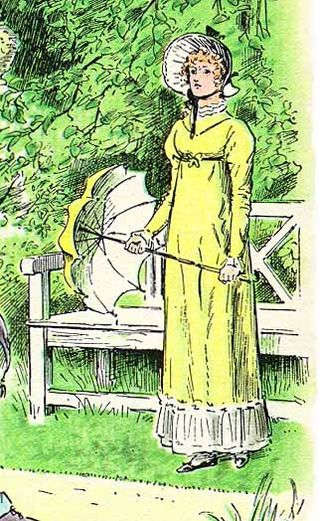
Elizabeth Bennet is the protagonist in the 1813 novel Pride and Prejudice by Jane Austen. She is often referred to as Eliza or Lizzy by her friends and family. Elizabeth is the second child in a family of five daughters. Though the circumstances of the time and environment push her to seek a marriage of convenience for economic security, Elizabeth wishes to marry for love.
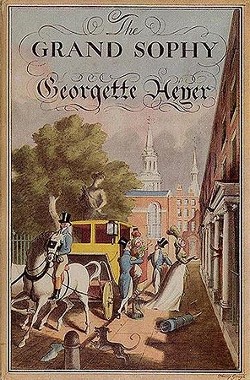
The Grand Sophy is a Regency romance novel by Georgette Heyer. It was first published in 1950 by Heinemann in the UK and Putnam in the U.S. Sales were brisk. Heinemann reported that in Australia it sold forty thousand copies in its first five months. There was also a Book Club edition in 1951.

The Foundling is a Regency romance novel written by Georgette Heyer and published by William Heinemann Ltd in 1948. It was also serialised in the Woman's Journal as "His Grace, the Duke of Sale", followed by a Book Club edition in 1949.
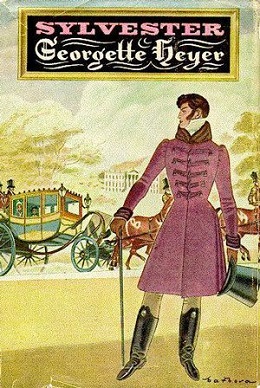
Sylvester, or the Wicked Uncle is a Regency romance novel by Georgette Heyer. First published by Heinemann, London and Putnam, New York in 1957, it is the story of intelligent and desperate Phoebe who ends up marrying the man she has run away from home to avoid, and whom she has caricatured as the villain in her novel. The book features gentle mockery of the Gothic novel genre and also features Heyer's characteristic strong heroine, with a desire for independence, who marries on her own terms. The story is set in 1817-1818.

Bath Tangle is a Regency romance novel by Georgette Heyer. The story is set in 1816.

April Lady is a Regency romance by Georgette Heyer, published in 1957 by Heinemann in the UK and by Putnam in the US. Previously serialised in the Woman's Journal as “My Lady Cardross”, the new novel was Heyer’s forty-fourth book and her fifteenth Regency novel.
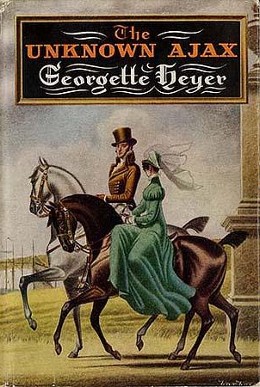
The Unknown Ajax is a Regency romance by Georgette Heyer, published in 1959 by Heinemann in the UK and in 1960 by Putnam in the US. It was her forty-seventh novel and the eighteenth set in Regency times.

Fitzwilliam Darcy Esquire, generally referred to as Mr. Darcy, is one of the two central characters in Jane Austen's 1813 novel Pride and Prejudice. He is an archetype of the aloof romantic hero, and a romantic interest of Elizabeth Bennet, the novel's protagonist. The story's narration is almost exclusively from Elizabeth's perspective; the reader is given a one-sided view of Darcy for much of the novel, but hints are given throughout that there is much more to his character than meets the eye. The reader gets a healthy dose of dramatic irony as Elizabeth continually censures Mr. Darcy's character despite the aforementioned hints that Mr. Darcy is really a noble character at heart, albeit somewhat prideful. Usually referred to only as "Mr. Darcy" or "Darcy" by characters and the narrator, his first name is mentioned twice in the novel.

Faro's Daughter is a Georgian romance novel by Georgette Heyer that was first published in 1941 by Heinemann in the UK and in the US by Doubleday in 1942. The story's focus is on the misfortunes of an aunt and niece trying to run a gambling house for the upper classes.
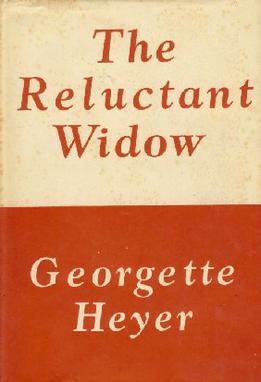
The Reluctant Widow is a 1946 Regency romance by Georgette Heyer, published by Heinemann in the UK, and by Putnam the following year in the US. A humorous parody of a Gothic Novel, it is set in early 1813. It was published with the description "By midnight she is a bride, by dawn a widow", and with gouache artwork by Philip Gough.

Lady of Quality is the last Regency romance novel written by Georgette Heyer. It was first published in 1972 and was the last of her novels to be published during her lifetime.
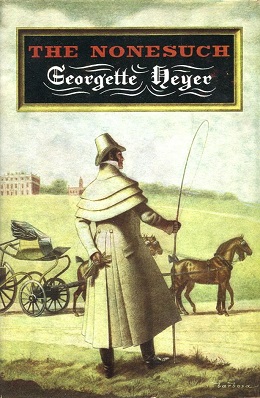
The Nonesuch is a Regency romance novel by Georgette Heyer. The story is set in 1816/1817.

A Civil Contract is a Regency romance novel by Georgette Heyer, first published in 1961. Set in 1814–1815, it is also a historical novel and follows the general pattern of storytelling of Heyer's other novels. The romantic plot centers on a viscount who reluctantly enters a marriage of convenience with a wealthy merchant's daughter.
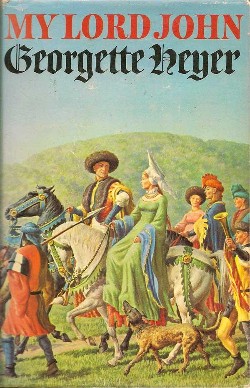
My Lord John is an unfinished historical fiction novel by the British author Georgette Heyer, published posthumously in 1975 after her death the previous year. It traces the early lives of the "young lordings" – Harry, Thomas, John, and Humfrey – all sons of the future Lancastrian king Henry IV of England. They grow up amidst turbulent events including the 1394 pestilence, the exile of their father by Richard II, the death of their powerful grandfather John of Gaunt, and the seizure of the throne by their father. John of Lancaster serves as the novel's main character.

Georgian society in Jane Austen's novels is the ever-present background of her work, the world in which all her characters are set. Entirely situated during the reign of George III, the novels of Jane Austen describe their characters' everyday lives, joys, sorrows, and loves, providing insight into the period.

Northanger Abbey is a 2007 British television film adaptation of Jane Austen's 1817 novel of the same name. It was directed by British television director Jon Jones and the screenplay was written by Andrew Davies. Felicity Jones stars as the protagonist Catherine Morland and JJ Feild plays her love interest Henry Tilney.



















